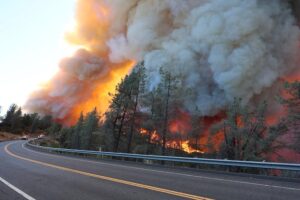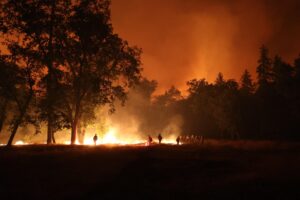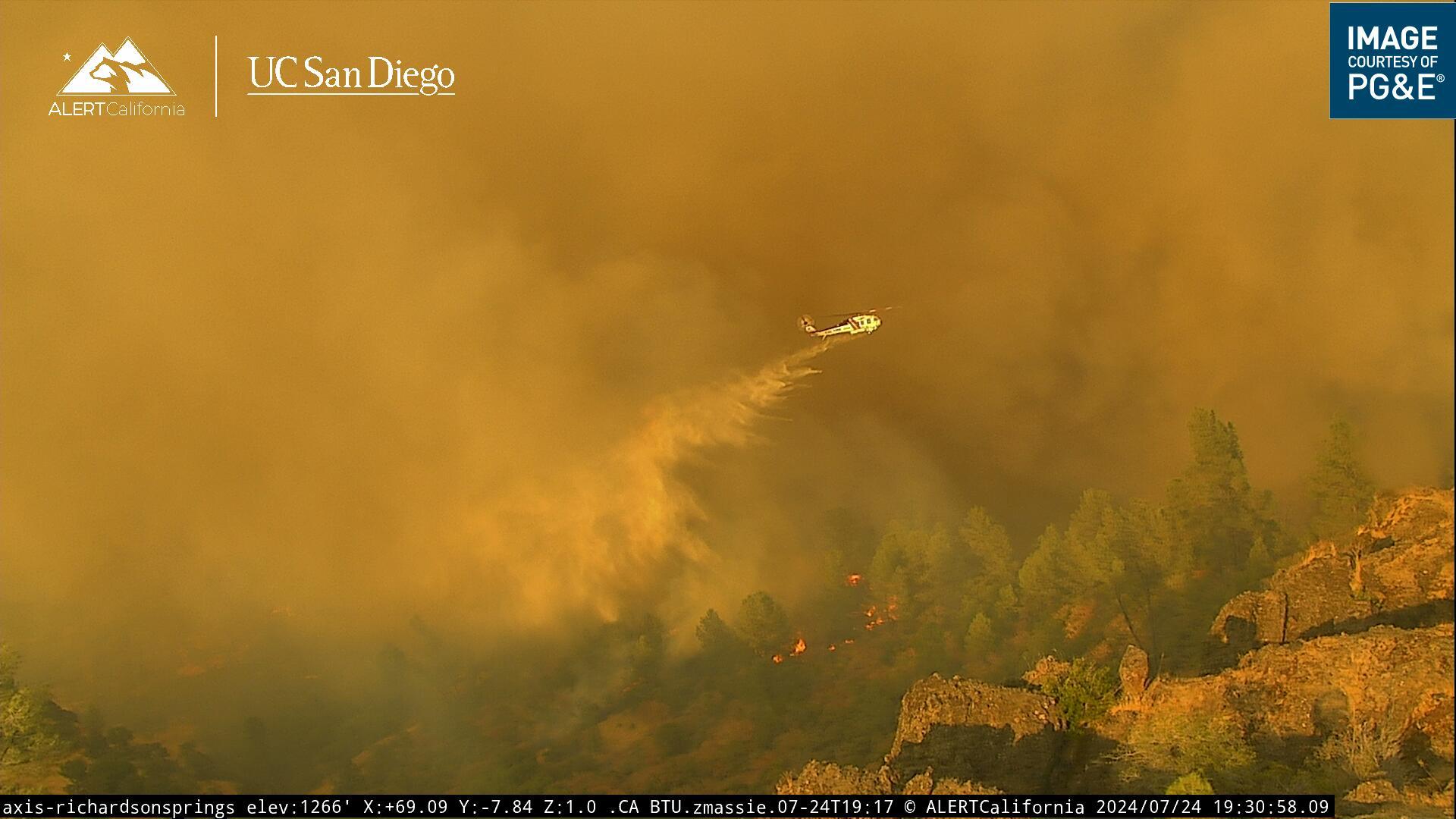Below is a Sacramento Bee op-ed by RMEF Chief Conservation Officer Blake Henning and Property and Environment Research Center CEO Brian Yablonski.
Implementing forest restoration in California and throughout the Western U.S. has now become more challenging thanks to an obscure and controversial court decision you likely have never heard of.
Issued in 2015, the so-called Cottonwood federal court decision requires the Forest Service to halt restoration work throughout a forest whenever a new species is listed, critical habitat is designated or other new information is discovered about a species in that particular forest. This decision — which is designed to protect animals — is now having the opposite effect: It is destroying their habitat by preventing forest restoration and making megafires more frequent.
Restoring our forests and reducing the risk of catastrophic wildfire will, in large part, require overcoming this legal hurdle.
 This news is especially concerning given that we are well into fall and the 2024 wildfire season is still ongoing. So far this year, California’s Park Fire (see photos above to the left and below) grew to be the fourth-largest wildfire in the state’s history. Wildfires in Oregon and Idaho shut down major highways and blanketed western states in smoke for months. And in Wyoming, wildlife has been sent fleeing the state’s ongoing Elk Fire. In total, nearly eight million acres have already burned this year.
This news is especially concerning given that we are well into fall and the 2024 wildfire season is still ongoing. So far this year, California’s Park Fire (see photos above to the left and below) grew to be the fourth-largest wildfire in the state’s history. Wildfires in Oregon and Idaho shut down major highways and blanketed western states in smoke for months. And in Wyoming, wildlife has been sent fleeing the state’s ongoing Elk Fire. In total, nearly eight million acres have already burned this year.
To make future wildfire seasons less severe, our national forests need trauma care. The consensus among ecologists, fire scientists and forest managers is clear: We must rapidly increase the pace and scale of forest restoration. Active forest restoration can reduce unnatural fuel loads through selective thinning and prescribed fire, making our forests more resilient when a wildfire does break out. It also restores habitat for keystone species like elk.
Before the Cottonwood Environmental Law Center sued the forest service, it was accustomed to thoroughly analyzing a project’s potential impact on listed species in a review process that can take years. An analysis by the Property and Environment Research Center finds that, on average, it can take between three to five years from the time the environmental review process is initiated to when work on the ground actually begins. Cottonwood adds an additional unnecessary analysis of the broader forest plan governing the project, which needlessly holds up beneficial restoration projects. It does so specifically in nine Western states that are home to the most acres in need of restoration, including California and Montana. This is why the Obama administration warned the ruling would “cripple” the Forest Service.
Cottonwood empowers litigants to block restoration projects even after they’ve passed the regulatory review process and have begun work on the ground. This process creates potentially harmful delays, often leaving wildlife more vulnerable to the ravages of wildfire.
 Sadly, there are numerous examples of delays inadvertently harming wildlife habitat.
Sadly, there are numerous examples of delays inadvertently harming wildlife habitat.
In Montana’s Helena-Lewis and Clark Forest, for example, a forest restoration project meant to selectively harvest lodgepole pine killed by beetle infestation and reduce unnaturally dense stands with prescribed fire was halted by a court injunction. Less than two months later, the Park Creek Fire burned much of the proposed project area and decimated the very grizzly bear and elk habitat the litigants aimed to protect. This is just one example of how Cottonwood can be abused and beneficial restoration projects can be hampered, with devastating consequences.
A temporary legislative ‘fix’ was put in place by Congress in 2018, but it expired in 2023. Today, a bipartisan permanent fix is making its way through Congress and is currently included in multiple pieces of pending legislation. In our home state of Montana, a permanent fix has garnered support from both Democrats and Republicans led by Sen. Steve Daines, R-MT, and cosponsored by Sen. John Tester, D-MT. A fix has also been approved by the Senate Energy and Natural Resources Committee on a bipartisan vote. With support from both parties, there’s hope a solution can make it over the policy finish line by the end of this year.
Without a permanent fix, the Forest Service has warned that 87 forest plans across the West could be ground to a halt. According to Forest Service Deputy Chief Chris French, it would take the service “somewhere between five and 10 years and tens of millions of dollars” to complete the duplicate analysis potential Cottonwood injunctions would impose. With an 80-million-acre forest restoration backlog, that’s time and money the Forest Service simply does not have.
If we want to buck the trend of devastating wildfire seasons, expanding forest restoration work and streamlining processes must be a top priority. By permanently fixing this one court decision, we could free the Forest Service of harmful red tape and frivolous litigation and get to work making our forests more resilient before next year’s wildfire season.
(Photo credit: PG&E and InciWeb)
